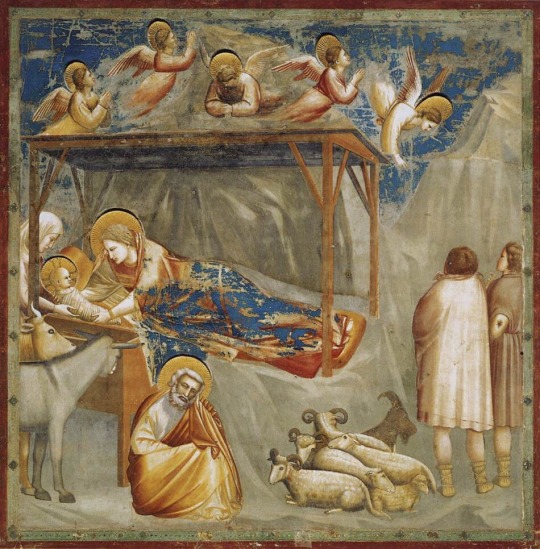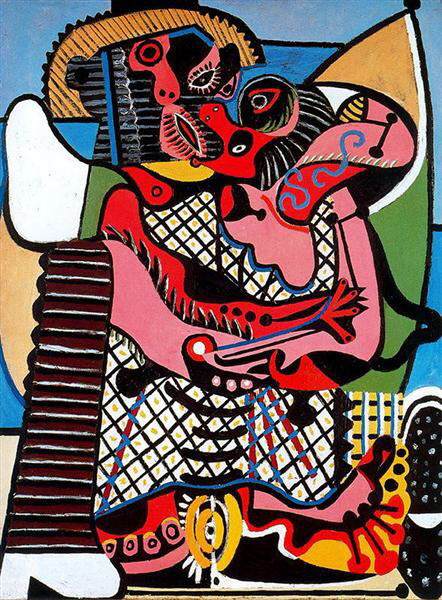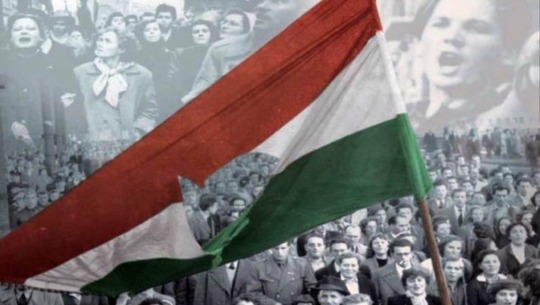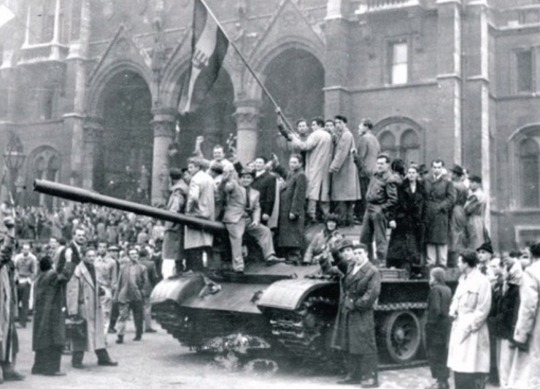Photo

Henri Matisse - Still Life with Books and Candle (1890) - This painting is one of the first ones which he created. Two years later in 1891 Matisse returned to Paris to study art at the Académie Julian and became a student of William-Adolphe Bouguereau and Gustave Moreau. He began painting still-lives and landscapes in the traditional Flemish style, at which he achieved reasonable proficiency. Most of his early works employ a dark palette and tend to be gloomy. Matisse was influenced by the works of earlier masters such as Jean-Baptiste-Siméon Chardin, Nicolas Poussin, and Antoine Watteau, as well as by modern artists, such as Édouard Manet, and by Japanese art. Chardin was one of Matisse's most admired painters having made four copies of the French still-life master paintings in the Louvre. Although he executed numerous copies after the old masters he also studied contemporary art. His first experimentations earned him a reputation as the rebellious member of his studio classes. After a discouraging year at the Académie Julian, he left in disgust at the overly perfectionist style of teaching there. Afterwards he trained with Moreau, an artist who nurtured more progressive leanings. In both studios, as was usual, students drew endless figure studies from life. From Bouguereau, he learned the fundamental lessons of classical painting. His one art-schooled technical standby, almost a fetish, was the plumb line. No matter how odd the angles in any Matisse, the verticals are usually dead true. Moreau was a painter who despised the "art du salon", so Matisse was destined, in a certain sense, to remain an "outcast" of the art world. He initially failed his drawing exam for admission to the École des Beaux-Arts, but persisted and was finally accepted.
#Henri Matisse#art#painting#still life#oil on canvas#Realism#artist#painter#French art#French artist#French painting#French painter#French Realism#Matisse#artwork#masterpiece#Matisse painting#Henri Matisse painting#19th Century#19th Century art#19th Century French art#19th Century painting#19th Century French painting#early years#early period#private collection
71 notes
·
View notes
Quote
“I love you dearly, mademoiselle; but I shall always love painting more.”
Henri Matisse Matisse was so committed to his art that he later extended a warning to his fiancée, Amélie Parayre, whom he later married:
154 notes
·
View notes
Photo

The young Henri Matisse by John Peter Russell, ca. 1888.
- In 1887, at the age of 18 he went to Paris to study law, working as a court administrator in Le Cateau-Cambrésis after gaining his qualification. He first started to paint in 1889, after his mother brought him art supplies to pass the time during a period of convalescence following an attack of appendicitis. He discovered “a kind of paradise” as he later described it, and decided to become an artist, so he leaved the law school deeply dismay his father. He said later: "From the moment I held the box of colors in my hands, I knew this was my life. I threw myself into it like a beast that plunges towards the thing it loves.” Matisse’s mother was the first to advise her son not to adhere to the “rules” of art, but rather listen to his own emotions.
#Henri Matisse#photo#the young Matisse#Matisse#the young Henri Matisse#John Peter Russel#photograpthy#photo by John Peter Russel#1888#19th Century#19th Century photography
158 notes
·
View notes
Photo

Henri Matisse with his mother, Anna in 1889. - Matisse’s father, Émile Hippolyte Matisse, was a grain merchant whose family were weavers. His mother, Anna Heloise Gerard, was a daughter of a long line of well-to-do tanners. Warmhearted, outgoing, capable and energetic, she was small and sturdily built with the fashionable figure of the period: full breasts and hips, narrow waist, neat ankles and elegant small feet. She had fair skin, broad cheekbones and a wide smile. "My mother had a face with generous features," said her son Henri, who always spoke of her with particular tenderness of the sensitivity. Throughout the forty years of her marriage, she provided unwavering, rocklike support to her husband and her sons. Matisse later said: "My mother loved everything I did." He grew up in nearby Bohain-en-Vermandois, an industrial textile center, until the age of ten, when his father sent him to St. Quentin for lycée. Anna Heloise worked hard. She ran the section of her husband's shop that sold housepaints, making up the customers' orders and advising on color schemes. The colors evidently left a lasting impression on Henri. The artist himself later said he got his color sense from his mother, who was herself an accomplished painter on porcelain, a fashionable art form at the time. Henri was the couple’s first son.
#Henri Matisse#photo#art#artist#Anna Heloise Gerard#the young Matisse#the young Henri Matisse#Matisse and his mother#Henri Matisse and his mother#Matisse#photography#family#mother and son
13 notes
·
View notes
Photo

Henri Matisse - Self Portrait (1918)
- Henri-Émile-Benoît Matisse was born at eight o'clock in the evening on the last night of the year, 31 December 1869, Le Cateau-Cambrésis is in the extreme north of France near the Belgian border. The house had two rooms, a beaten earth floor and a leaky roof. Matisse said long afterwards that rain fell through a hole above the bed in which he was born. He was known for both his use of colour and his fluid and original draughtsmanship. He was a draughtsman, printmaker, and sculptor, but is known primarily as a painter.
In my opinion he is one of the greatest painters of all time!
#Henri Matisse#art#painting#self portrait#Post-Impressionism#artist#painter#oil on canvas#French art#French artist#French painting#French painter#Matisse#artwork#masterpiece#Matisse painting#Henri Matisse painting#French Post-Impressionsim#Henri Émile Benoît Matisse#France#Henri Matisse Museum#Le Cateau-Cambrésis#1918#20th Century#20th Century art#20th Century French art#20th Century painting#20th Century French painting
32 notes
·
View notes
Photo

Henri Matisse - The Bed in the Mirror (1919)
#Henri Matisse#art#painting#Post-Impressionism#private collection#interior#Matisse#The Bed in the Mirror#artwork#masterpiece#1919#French art#artist#French artist#French painting#painter#French painter#20th Century art#20th Century#20th Century French art#Henri Matisse painting#Matisse painting#oil on canvas#bouquet of flowers#bouquet#flower bouquet#flowers#still life
58 notes
·
View notes
Photo

Albrecht Dürer - The Flight to Egypt (1497)
#Albrecht Dürer#Renaissance#art#painting#religious painting#Christianity#Jesus#Jesus Christ#The Flight to Egypt#Northern Renaissance#The Seven Sorrows of Mary serie#artist#painter#Dürer#Albrecht Durer#Durer#1497#15th Century#15Century art#15th Century Renaissance#artwork#masterpiece#German art#German artist#German painting#German painter#German Renaissance#15th Century German art#15th Century German Renaissance#Dürer painting
29 notes
·
View notes
Photo

I would like to wish a very marry christmas to everyone with this Giotto painting - Nativity, Birth of Jesus from 1306.
This is a new begining for every christian, which is our biggest celebration with a more than 2000 years past. I wish if there could be peace all around the world since now, it’s time to stop the violence and terrible things!
#Giotto#christmas#Renaissance#art#painting#painter#artist#Italian Renaissance#Italian art#Italian artist#Italian painting#Italian painter#artwork#masterpiece#Jesus#Christ#Jesus Christ#birth of jesus#nativity#1306#14th Century#14th Century art#14th Century Italian art#14th Century Renaissance
17 notes
·
View notes
Photo

Pablo Picasso - The Kiss (1925) - I guess everyone knows Gustav Klimt's painting, The Kiss. One of my favorite ever. Lots of artist tried to remake it in their own style and i really admire this piece of Picasso and i'm so happy that i had chance to see this in the National Gallery of Budapest!
#Pablo Picasso#The Kiss#art#oil on canvas#painting#Surrealism#genre painting#artist#painter#Picasso#artwork#masterpiece#Spanish art#Spanish artist#Spanish painting#Spanish painter#Spanish Surrealism#Picasso painting#Pablo Picasso painting#1925#20th Century#20th Century art#20th Century Spanish art#20th Century Surrealism#20th Century Spanish Surrealism#National Gallery of Budapest#Magyar Nemzeti Galéria#Nemzeti Galéria#Budapest#Hungary
74 notes
·
View notes
Quote
I'm a poet, but a pathological poet.
Pablo Picasso
#Pablo Picasso#poet#painter#artist#quote#Picasso#art#Picasso quote#Pablo Picasso quote#Spanish art#Spanish artist#Spanish painting#Spanish painter#painting
8 notes
·
View notes
Photo

Pablo Picasso - The Frugal Meal (1904)
- Created during the artist’s Blue Period, “The Frugal Meal” is one of the masterpieces of twentieth-century graphic art, vividly evoking Picasso’s experiences as a young artist living in the low-rent district of Montmartre. “The Frugal Meal” rises above abject misery: Picasso creates an allegory of survival that addresses the difficulties and vicissitudes faced by the struggling artist. The print may have been inspired by illustrations for Jehan Richtus’s “Soliloques du Pauvre” (Soliloquies of the Poor) of 1897 made by Theodore Steinlen and Picasso’s fellow Catalan artist Joaquim Sunyer Miró, which are fraught with the same weariness and angst.
#Pablo Picasso#etching#art#painting#artwork#masterpiece#artist#painter#Picasso#1904#20th Century#20th Century art#Spanish art#Spanish artist#Spanish painting#Spanish painter#Picasso artwork#Pablo Picasso artwork#Paris#The Frugal Meal#etching on paper
196 notes
·
View notes
Photo

Pablo Picasso - Matador and Female Nude (1970)
#Pablo Picasso#portrait#art#painting#oil on canvas#Surrealism#nude#Picasso#artist#painter#Spanish art#Spanish artist#Spanish painter#Spanish Surrealism#Spanish painting#artwork#masterpiece#matador#1970#20th Century art#20th Century#20th Century Spanish art#Picasso painting#Pablo Picasso painting
100 notes
·
View notes
Photo

Pablo Picasso - Portrait of Ambroise Vollard (1909-1910) - "That's Voyard!" exclaimed the four-year-old-son of a friend of Ambroise Vollard's, on seeing the painting. In fact, it's easy to recognize the features of the Parisian galleryst, famous for having works by Paul Cézanne, Vincent van Gogh or Henri Matisse.
#Pablo Picasso#portrait#Cubism#Ambroise Vollard#galleryst#Picasso#art#artist#painting#painter#Cubist period#Spanish art#Spanish artist#Spanish painter#Spanish painting#artwork#masterpiece#oil on canvas#Paris#1909#1910#Cubist#Picasso painting#Pablo Picasso painting#Pushkin Museum of Fine Arts#Moscow#20th Century#20th Century art#20th Century Spanish art#20th Century Cubism
24 notes
·
View notes
Photo


Emlékül hazánk hőseinek, az 1956-os szabadságharcban résztvevő bátor ifjaknak. Köszönet nektek azért, hogy harcoltatok a szabadságunkért és hazánkért.
In memory of the heroes of the revolution in Hungary 1956, who were real patriots and brave young persons. A very big thank for them that they fought for our independence and for our homeland against the invading Russians.
And here is a Márai Sándor poem, what he wrote during and about the revolution in New York.
Márai Sándor - Mennyből az angyal
Mennyből az angyal – menj sietve
Az üszkös, fagyos Budapestre.
Oda, ahol az orosz tankok
Között hallgatnak a harangok.
Ahol nem csillog a karácsony.
Nincsen aranydió a fákon,
Nincs más, csak fagy, didergés, éhség.
Mondd el nekik, úgy, hogy megértsék.
Szólj hangosan az éjszakából:
Angyal, vigyél hírt a csodáról.
Csattogtasd szaporán a szárnyad,
Repülj, suhogj, mert nagyon várnak.
Ne beszélj nekik a világról,
Ahol most gyertyafény világol,
Meleg házakban terül asztal,
A pap ékes szóval vigasztal,
Selyempapír zizeg, ajándék,
Bölcs szó fontolgat, okos szándék.
Csillagszóró villog a fákról:
Angyal, te beszélj a csodáról.
Mondd el, mert ez világ csodája:
Egy szegény nép karácsonyfája
A Csendes Éjben égni kezdett –
És sokan vetnek most keresztet.
Földrészek népe nézi, nézi,
Egyik érti, másik nem érti.
Fejük csóválják, sok ez, soknak.
Imádkoznak vagy iszonyodnak,
Mert más lóg a fán, nem cukorkák:
Népek Krisztusa, Magyarország.
És elmegy sok ember előtte:
A Katona, ki szíven döfte,
A Farizeus, ki eladta,
Aki háromszor megtagadta.
Vele mártott kezet a tálba,
Harminc ezüstpénzért kínálta
S amíg gyalázta, verte, szidta:
Testét ette és vérét itta –
Most áll és bámul a sok ember,
De szólni Hozzá senki nem mer.
Mert Ő sem szól már, nem is vádol,
Néz, mint Krisztus a keresztfáról.
Különös ez a karácsonyfa,
Ördög hozta, vagy Angyal hozta –
Kik köntösére kockát vetnek,
Nem tudják, mit is cselekesznek,
Csak orrontják, nyínak, gyanítják
Ennek az éjszakának a titkát,
Mert ez nagyon furcsa karácsony:
A magyar nép lóg most a fákon.
És a világ beszél csodáról,
Papok papolnak bátorságról.
Az államférfi parentálja,
Megáldja a szentséges pápa.
És minden rendű népek, rendek
Kérdik, hogy ez mivégre kellett.
Mért nem pusztult ki, ahogy kérték?
Mért nem várta csendben a végét?
Miért, hogy meghasadt az égbolt,
Mert egy nép azt mondta: „Elég volt.”
Nem érti ezt az a sok ember,
Mi áradt itt meg, mint a tenger?
Miért remegtek világrendek?
Egy nép kiáltott. Aztán csend lett.
De most sokan kérdik: mi történt?
Ki tett itt csontból, húsból törvényt?
És kérdik, egyre többen kérdik,
Hebegve, mert végképp nem értik –
Ők, akik örökségbe kapták –:
Ilyen nagy dolog a Szabadság ?
Angyal, vidd meg a hírt az égből,
Mindig új élet lesz a vérből.
Találkoztak ők már néhányszor
– A költő, a szamár, s a pásztor –
Az alomban, a jászol mellett,
Ha az Élet elevent ellett,
A Csodát most is ők vigyázzák,
Leheletükkel állnak strázsát,
Mert Csillag ég, hasad a hajnal,
Mondd meg nekik, –
mennyből az angyal.
#1956#revolution#Budapest#Hungary#Márai Sándor#Márai#Mennyből az angyal#56#forradalom#szabadságharc#memory#history#köszönet a hősöknek
1 note
·
View note
Photo

Happy World Food Day! Vincent van Gogh made several food still lifes during his painting career, like ‘Red Cabbages and Onions’(1887).
#Vincent van Gogh#World Food Day#art#artist#painting#painter#Vincent Willem van Gogh#Van Gogh#artwork#masterpiece
87 notes
·
View notes
Photo

Pablo Picasso - Dozing Drinker (1902) - As I write you before, Picasso's blue period started in 1901, after his friend commited suicide. He lived in very poor conditions during this term of his life in Montmartre, Bateau-Lavoir, he had lots of financial difficulties. He regularly visited the women's prison hospital in Saint-Lazare, where venereal diseased prostitutes preserved. In the cells, ill and lonely women and girls vegetated, such as the woman in this painting, who fall asleep during drinking. The other title of the painting is Absinthe drinker: the greenish shades of the woman's face reminds us to the color of the alcohol, which causes madness.
#Pablo Picasso#art#painting#oil on panel#portrait#Post-Impressionism#Dozing Drinker#Absinthe Drinker#artist#painter#Spanish Post-Impressionsim#Spanish art#Spanish artist#Spanish painting#Spanish painter#artwork#masterpiece#blue period#Picasso#Picasso's blue period#Pablo Picasso's blue period#Picasso blue period#Pablo Picasso blue period#1902#Picasso painting#Pablo Picasso painting#20th Century#20th Century art#20th Century Spanish art#Barcelona
152 notes
·
View notes
Quote
Art is the lie that enable us to realize the truth.
Pablo Picasso
#Pablo picasso#quote#art#painter#artist#painting#Picasso quote#Pablo Picasso quote#Spanish art#Spanish artist#Spanish painter#Spanish painting#quotes
23 notes
·
View notes